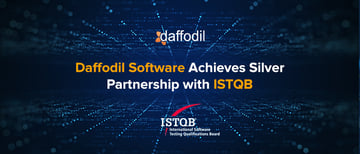
Is your team struggling to gain visibility into the performance, availability, and health of cloud applications & infrastructure? Do you need to automate cloud monitoring so that your team focuses on its core competency? If yes, then this guide will introduce you to the business-critical components of cloud monitoring and how you can leverage them to ensure automation & efficiency in operations.
What is Cloud Monitoring?
As the cloud architecture gets complex, it becomes challenging to monitor the performance of developed cloud applications & infrastructure. In a continuous scaling environment, it’s important for IT administrators and the DevOps teams to maintain visibility into the performance of digital assets in the cloud. This is where a data-driven approach is required that helps to collect actionable insights (metrics) and improve the availability of resources in the cloud.
|
Cloud monitoring comprises strategies, practices, and tools to analyze, track, and manage the applications and services running in a cloud-native environment. |
Cloud monitoring is not limited to analyzing digital assets in just one cloud environment. Considering the benefits that hybrid and multi-cloud environments bring in, monitoring can be divided into two prime segments:
Hybrid Cloud Monitoring: Hybrid cloud environment combines public as well as private on-premise infrastructure. In this complex environment, it is important to have end-to-end visibility of network configurations and resources that are hosted on cloud & on-premise environments.
Multi-Cloud Monitoring: In a multi-cloud environment, the monitoring metrics are derived from different public cloud platforms. In this case, the cloud monitoring services would be available for AWS, GCP, Azure, Oracle, or any other cloud provider platform. While multi-cloud provides flexibility to scale and build an infrastructure that aligns well with the business, it adds up to the complexity of cloud monitoring.
Fortunately, there are cloud monitoring tools that are built to deal with the problem of hybrid and multi-cloud monitoring. These tools integrate well with different cloud environments so that there is the facility to analyze multiple platforms:
a) AWS cloud monitoring
b) GCP cloud monitoring
c) Azure cloud monitoring
Application Performance Monitoring (APM)
In a cloud-native environment, Application Performance Monitoring (APM) ensures that all the business-critical applications meet standard expectations for performance, availability, and end-user experience. This includes:
- A system to notify administrators when the performance baselines aren’t met (Alerting)
- A system for visibility into the root cause of the performance or health issues (Visibility)
- A system for automated resolution of issues impacting business or the end users (Resolution)
Cloud application monitoring can be performed using third-party tools or services by the cloud provider itself (AWS, GCP, or Azure). There are 5 key components of application performance monitoring:
- Runtime application architecture: This involves analyzing the hardware and software components of the application, identifying the pattern of performance problems to anticipate future issues, and planning necessary fixes for them.
- Real user monitoring: This application monitoring component helps understand how well the application is performing for the end-users. For example, an alert is passed if the response time in a mobile or web app exceeds the defined threshold. There are two ways real user monitoring can be achieved:
Synthetic monitoring is where bits are used to simulate an end user to figure out problems with the application. This is generally done in scenarios where Service level agreements (SLA) need to be monitored.
Another way of real user monitoring is Agentless monitoring. In this case, a data-driven approach is adopted for APM. It unveils information about the infrastructure without having to install any agent or software on the server/device being monitored.
- Business transactions: For a mobile banking app, the common transactions would be checking bank or credit card balances, transferring funds from one bank to another, etc. Business transaction monitoring aims at testing & analyzing situations that may impact the performance of these transactions.
- Components monitoring: In this type of application performance monitoring includes analyzing servers, middleware, network & application components, and operating systems. This helps to deep dive into the performance of all the resources and events of the infrastructure.
- Analytics & reporting: This aspect of cloud application monitoring deals with creating a unified visibility of insights that are gathered from the above components and converting them into actionable insights.
By having a rigid cloud monitoring system in place, an organization can leverage the following benefits:
- Increased stability and uptime of the application
- Continuous monitoring leads to reduced performance incidents
- Real-time alerting leads to shorter time-to-resolution
- Infrastructure optimization & reduced operational cost
- Improved operational and developer efficiency
ALSO READ: 10 Key DevOps Metrics to Manage Deployment Pipeline
Infrastructure Monitoring
Cloud infrastructure monitoring is the process of tracking the performance and utilization of cloud resources such as storage, networks, virtual machines, etc. This may include regular monitoring of resource utilization, their availability, health & performance checks, tracking & logging system events, etc. The idea behind infrastructure monitoring is to detect anomalies on time and ensure that issues at the cloud resource level do not impact the business.
DevOps engineers, Operations teams, and Site Reliability Engineers (SREs) make the most of infrastructure monitoring for the following benefits:
- Troubleshooting performance issues
With infrastructure monitoring tools and services, critical components, such as hosts and containers can be checked for their performance. In case of any outage, the engineers can determine the cause of the problem and work around them, thereby preventing incidents from escalating into outages.
- Continuous Infrastructure Optimization
The right provisioning of resources has a significant role in optimizing the cost and performance of the infrastructure. When continuous cloud monitoring is done, the DevOps team can keep a track of under or over-utilized resources. This visibility of resource utilization and spending patterns helps to keep the infrastructure and its cost-optimized.
ALSO READ: The FinOps Approach to Automate Cloud Cost Optimization Cycle
- Forecast Infrastructure Requirements
Cloud monitoring tools provide relevant metrics to review and predict resource consumption. For example, if resources are provisioned on-demand, then they can be reserved to optimize the cost. Having an estimate of what resources are utilized helps in the right sizing and provisioning of resources.
Serverless Monitoring
Serverless computing enables developers to innovate faster, reduce operational overheads, and scale seamlessly. Serverless monitoring keeps a check on serverless functions in the cloud that can impact customer-facing applications in real time. AWS Lambda, Google Cloud Functions, and Azure Functions are serverless functions by popular cloud service providers.
Compared to application and infrastructure monitoring, there are limited tools available for serverless monitoring. These tools inject a piece of code into the serverless function and send monitoring data to a dashboard.
Container Monitoring
Another critical aspect of cloud monitoring is analyzing the performance and health of containerized applications & microservices environments. Container monitoring provides metrics, logs, and traces that help DevOps or system engineers make informed decisions about containerized platforms. For example:
- When to scale up or scale down instances, tasks, or pods
- Improve purchasing decisions for on-demand or reserved instances
- Identify threshold and notify operators for resource optimization
- When to dynamically add instances to the cluster when a threshold is reached
While containers are an indispensable part of modern applications, their monitoring is one of the biggest challenges that organizations face. There are some unique challenges associated with container monitoring compared to traditional monitoring. For example:
Containers are short-lived: Containers can be quickly provisioned and destroyed. This makes it difficult to track changes, especially in a complex environment that has a high churn rate.
Containers have shared resources: Containers share CPU, storage, memory, and network resources at the Operating System level. This makes it challenging to monitor resource consumption on the physical host, which is actually responsible for measuring the performance of containers.
Insufficient tool for monitoring: Tools for traditional cloud monitoring are not sufficient to provide metrics, logs, and traces required to monitor and troubleshoot clusters of containers.
While there are challenges that may make container monitoring difficult, tools combined with the right scripts can make cloud monitoring comprehensive. Scripts make it possible to customize the metrics, create an alert system, and have insights into the container clusters and applications.
Building a Comprehensive Cloud Monitoring System
Every cloud-native environment has unique monitoring requirements. Thus, there is no one solution that fits all.
For the diverse cloud monitoring requirements, it is always a practical deal to combine the proficiency of tools with custom scripts to detect anomalies, automate resolution, and have unified visibility of metrics to take required actions.
At Daffodil, our cloud monitoring services include a 360-degree approach to track, analyze, and visualize performance metrics. This includes (but is not limited to):
- 24/7 cloud surveillance support for business-critical applications
- Identifying performance issues for corrective action
- Develop scripts and automate resolution for detected anomalies
- Monitoring for application, infrastructure, server, & containers
- Optimum application performance with SLA & incident management reporting
There is a lot more involved in application performance than cloud monitoring metrics. To know what exactly your business applications need to be up & running, we recommend a connection with our seasoned cloud experts. If interested, here is access to your free cloud consultation.



